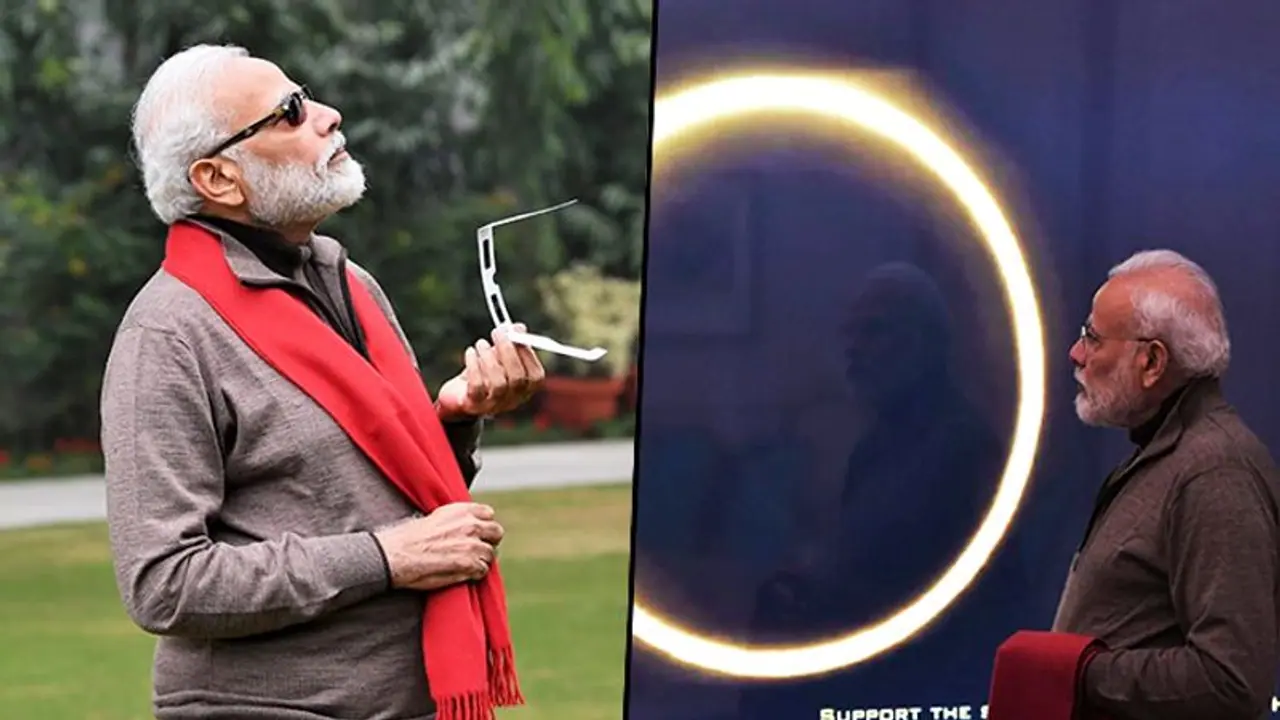Taking to Twitter, Prime Minister Narendra Modi said that he did catch a glimpse of the solar eclipse in Kozhikode and other parts on the live stream, but could not witness it directly
New Delhi: Several parts of the country, including Odisha, Kerala, Gujarat, Tamil Nadu, Karnataka, Maharashtra and Delhi, are witnessing the solar eclipse on Thursday (December 26) morning, which is said to be the last one of the decade.
Prime Minister Narendra Modi took to Twitter and said that he missed the chance to watch the solar eclipse, but did manage to catch glimpses of it through a live stream from Kerala's Kozhikode.

Taking to Twitter, the Prime Minister said, "Like many Indians, I was enthusiastic about #solareclipse2019. Unfortunately, I could not see the Sun due to cloud cover, but I did catch glimpses of the eclipse in Kozhikode and other parts on live stream. Also enriched my knowledge on the subject by interacting with experts."
The solar eclipse, which occurs when the moon passes between the earth and the sun, began at around 8:17 am and went on till 10:57 am today.

It is also being referred to as "ring of fire" and "Surya Grahan" in Hindi.
The solar eclipse also holds religious importance and special prayers are offered on the day. In Hinduism, people avoid eating anything during the eclipse.
The portals of Birla Mandir in the national capital were closed 12 hours before the eclipse after an 'aarti' was performed on Wednesday evening. The temple doors will open at 12 pm today, after which devotees can offer prayers.

Meanwhile, hundreds of devotees also reached the Ganga Ghat in Uttar Pradesh's Varanasi for a holy dip in the river and offered special prayers during the occasion.
There are three types of solar eclipse -- partial, annular and total.
According to experts, people should not look directly at the sun during the eclipse without proper protection as it can even damage the eyes. Instead, solar filters, pinhole camera or a telescopic projection can be used to see the eclipse.
Besides India, the eclipse is visible in Sri Lanka, Malaysia, the United Arab Emirates, Saudi Arabia, Qatar, Indonesia, Singapore, Oman and Guam.
